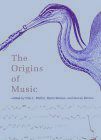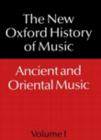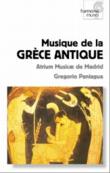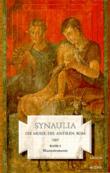Music in Ancient Times
Our knowledge of musical practice before 200 A.D. is extremely limited because few attempts were made by ancient cultures to preserve music using notation systems. Iconography in music is the study of graphical representations of musical activities. Archaeologists have discovered artifacts and drawings dating to prehistoric times which depict musicians performing on various instruments. Early musical instruments have also been discovered. For example, a recent dig in the Ukraine uncovered musical instruments made from the bones of a wooly mammoth dating back to 18,000 B.C. It is likely that music evolved as a communications medium for early humans in hunter-gatherer groups. Drums and primitive horns made from shells and animal parts are used by primitive peoples even today to communicate over great distances. It is possible that early humans were impressed with the power of such communication and found the sounds to be pleasing as well. As hunter-gatherer groups evolved into agrarian cultures, music may have had a place in religious ceremonies and as a welcome rhythmic accompaniment to the tedious labor of farming. Music was almost certainly placed in a supportive role in human activities. Scholars consider it unlikely that music was ever an independent activity in prehistoric civilizations.
Ancient Chinese Music
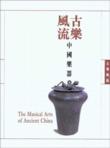
The Musical Arts of Ancient China
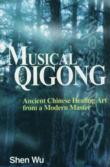
Musical Qigong: Ancient Chinese Healing Art
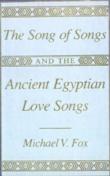
Ancient Egyptian Love Songs
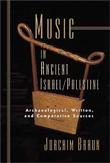
Music in Ancient Israel/Palestine
Historical records of Chinese music history date back to the Shang dynasty circa 1600-1000 B.C. Chinese philosophers like Confucius (551-479 B.C.) regarded music as essential in maintaining order in the universe and in human society. Emperor Han Wudi, who reigned from 140 to 87 B.C., went so far as to create an Imperial Office of Music. The ancient Chinese were the first to develop a science of acoustics and placed a high value on the accurate tuning of instruments. Ancient Chinese music was monophonic and based on a five-tone scale similar to the western Pentatonic scale (CDEGA is one example). Expression in Chinese music performance emphasizes subtle changes in timbre on individual tones. Inflection, in Chinese music and language, is extremely important in the interpretation of content. Ancient literature describes a variety of tuned chimes, drums, bells, wind instruments, and string instruments in use in ancient Chinese music. Chinese traditional music has remained unusually stable throughout the millenia and sheds light on the musical practices of other ancient civilizations.
The Hurrian Hymn to Nikal
In the 1950's an archaelogical dig in Syria uncovered a set of clay tablets with cuneiform characters in the ancient Hurrian language. Hurrian was a language used by the citizens of the ancient city of Ugarit which occupied the land now used by the village of Ras Shamra and the small harbor of Minet-el-Beida, about six miles north of Latakia, in northwestern Syria. The tablets date back to approximately 1400 B.C. and contain a hymn to the moon god's wife, Nikal. Remarkably, the tablets also contain detailed performance instructions for a singer accompanied by a harpist as well as instructions on how to tune the harp. From this evidence, musicologists have produced a credible realization of the hymn performed in harmony with thirds, sixths, fourths, and fifths. This rare example of polyphony in ancient music appears to shatter the long held belief that harmony did not evolve in human musical expression until the middle ages. It is possible that further archaelogical evidence of early polyphony will be unearthed in the future.
Ancient Hebrew Music
The importance of music in the lives of the Hebrew peoples is well documented in the Old Testament. Psalms were sung during religious ceremonies in call-response (soloist followed by congregation) or antiphonally (one group followed by another). Wind, string, and percussion instruments are mentioned in the old Testament. The only traditional instrument still used in Jewish ceremonies today is the shofar, a primitive trumpet made from a ram’s horn. In some of the Old Testament scrolls, small markings appear above the text of the psalms. A Parisian scholar, Suzanne Haïk-Vantoura, has translated those markings into a system of music notation called "ta'amim". This system of marking the text with symbols denoting melodic outlines is strikingly similar to the earliest neumatic systems of notation used in Christian plainchant. The connection is extremely plausible given that early Christians are often considered as a messianic sect of Judaism, retaining Jewish customs and practices while gradually creating a new Christian identity.
Ancient Greek Music

Ancient Greek Music
The early Greeks considered music to be of mathematical and cosmic significance as well. Pythagoras of Samos (circa 500 B.C.) discovered the frequency proportions that define the intervals we hear today. For example, two notes whose frequencies are in a ratio of 2 to 1, sound one octave apart. A ratio of 3 to 2 produces a fifth, a ratio of 4 to 3 produces a fourth, and a ratio of 9 to 8 produces a major second. Greek musicians and philosophers used a single-string instrument, known as the monochord, to produce the various intervals. Pythagorean philosophers believed that these ratios also governed the movement of celestial bodies and other cosmic matters. Thus, music came to be revered as the highest of intellectual and artistic pursuits. Music theorists of the second century A.D. such as Nicomachus of Gerasa and Claudius Ptolemy wrote extensively about the mathematical, moral, and cosmic significance of music. Ptolemy's treatise, Harmonics, is the most useful extant reference on ancient Greek music theory. Interpretations of ancient treatises have yielded common ground on the matter of rhythmic notation but much disagreement and speculation on the interpretation of pitch. The Greeks used a system of modes known as tonoi which may or may not be similar in concept to the scales we use today.
Precise music notation as known today did not exist in ancient Greece. The ancient Greeks developed a system using Greek letters to notate melodic contour and rhythmic proportions. About 15 examples of ancient Greek music notation exist today. Scholars have tried to realize these pieces by gathering all available information from literary sources of the time about the tonal and rhythmic systems in use together with what is known about the construction of early Greek instruments. As a result, scholars have made educated guesses about the sound of ancient Greek music. It is widely believed that ancient Greek music was monophonic (melody only) or heterophonic (many instruments simultaneously playing different versions of the same melody).
Many literary references, however, exist to describe the role of music in Greek culture and the effects of music on human behavior. Unlike modern music, ancient Greek music was an integrated part of many other art forms, particularly dance, drama, and poetry. The Iliad and Odyssey by Homer, for example, are lengthy poems that are intended to be sung as odes with the accompaniment of plucked string instruments like the lyre or kithara. It is perhaps because of this integration that Greek philosophers considered music to have great psychological and even supernatural powers. The Doctrine of ethos maintained that different types of music could affect human behavior. For example, music in the Dorian mode would cause persons to become reasonable and contemplative. Conversely, music in the Phrygian mode would cause persons to become passionate and belligerent. Orpheus, one of the great mythic men of Greece, was said to have the power to move objects and influence the gods with his music. The sound of a given instrument was also very powerful. For example, the lyre and the kithara were said to evoke reason and were linked to the worship of Apollo, the god of reason. Similarly, a double-reed instrument known as the aulos was said to evoke passion and was linked to the worship of Dionysus, the god of ecstasy. The perceived influence of music on behavior was so common that extensive discussions of the topic appear in many of the dialogues of Plato, especially The Republic.
Music of the Early Roman Church
There is little evidence that Ancient Romans contributed much to music history other than the development of brass instruments used in the military. The Romans conquered Greece in 146 B.C. and assimilated and adapted Greek music and religion. Writings of Cicero, Quintilian, and others document the use of music for purely entertainment purposes at large festivals with choruses and instrumental ensembles. The gradual decline of Rome after 200 A.D. took place as the popularity of Christianity was increasing. The emperor Constantine I, who ruled from 306 to 337 A.D., adopted Christianity and legalized it for the first time in the Roman empire. Rome had for centuries exerted a peaceful and unifying influence on Europe but that was gradually disintegrating as barbarians increasingly threatened the security of the empire. When the Roman empire was permanently divided in 395 A.D., Christianity became the only major cultural force unifying the still vital eastern empire in Byzantium with the rapidly dissolving western empire in Europe. By the time the last Roman emperor, the young Romulus Augustulus, was finally deposed in 476, the papacy had established itself in Rome and was asserting jurisdiction over the Christian church. The music of the Christian church was for centuries the only cultivated art music in existence in Europe. Early Christian music, largely monophonic chant influenced by the Jewish cantorial tradition, was entirely vocal as the church attempted to purge the masses of the instrumental music associated with competing religions. Latin translations by Boethius (circa 480-524) and Cassiodorus (circa 490-585) of Greek literature on music theory also contributed to the theoretical foundations of early Christian chant. It is from these origins that the history of western art music properly begins.
Resources
For more information about ancient music, the following texts and recordings also are recommended.
